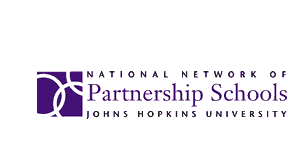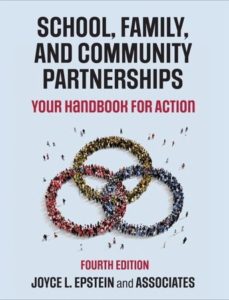Martha A. Mac Iver, Ph.D.
Associate Professor of Education and Principal Investigator1
Research shows that ninth grade is the “make or break” year for student success in high school. Some students start skipping school, and their poor attendance contributes to course failure, which puts them off-track for on-time graduation. Yet, just as students are making this critical transition from middle to high school, research also shows that family involvement in their education declines precipitously. NNPS has been working to help secondary schools improve their efforts to engage families during that critical transition to high school.
In our collaboration with Seattle Public Schools over the past four years, we developed a template to help Improve the Transition Process. This template can be used as an alternative for a non-academic goal (page 3) of the One-Year Action Plan for Partnerships. The template guides Action Teams for Partnerships (ATPs) to identify family and community engagement activities for the six types of involvement that will improve the transition of rising 9th graders to high school. It urges schools that include Grade 8 to plan activities to prepare families and students for the transition. It suggests that high schools design and implement activities that not only welcome 9th graders and their families to the school, but also continue to equip families to support their ninth graders’ attendance and coursework completion throughout the ninth grade year.
A training workshop for school teams in Seattle shared effective practices for engaging families of students entering high school and provided time and guidance for creating their one-year action plans. As in all NNPS workshops, school team members enjoyed the opportunity to learn from each other about their successful family engagement activities during the initial workshop and other “networked learning community” meetings in winter and spring for clusters of schools in different parts of the district.
Schools came to realize that families make the transition from grade 8 to high school with their students.Middle and high schools tried out new ideas for engaging families during the high school transition. Some middle schools in NNPS used a series of four interactive homework activities to guide discussions between eighth graders and a family member about how to be successful in high school. The TIPS-Transitions activities asked students and parents to think about the importance of good attendance, studying for tests, Grade Point Averages (GPA), and their dreams for success in high school. These activities are available from NNPS on request at no cost to use or adapt to spark 8th graders conversations with a parent about the upcoming transition.
Some feeder middle schools in Seattle connected for the first time with their receiving high schools to plan joint events. One example invited eighth grade families to attend an event on the evening just before students were scheduled to enroll in their ninth grade courses. Families had not previously been engaged in the important selection and enrollment process.
Some high schools began to realize the importance of planning activities and conferences with families at the start of the school year—before students received poor or failing semester grades. All schools learned about the importance of planning ahead so that translators and interpreters were available for families during events. School teams discussed the need to consider multiple ways of ensuring that all families receive important information, even when they cannot attend events at the school building. When data indicated that many families were not accessing the Parent Portal to monitor their child’s grades and other important information, school teams began strategizing about how they could improve communications to families about how to use this valuable resource.
Schools in this project made considerable progress in planning and implementing high school transition-focused activities. You can read more about this initiative in an Education Week article and in NNPS books of Promising Partnership Practices in the section on Transitions.
Even when middle and high schools make progress in improving their programs of school, family, and community partnerships, they sometimes forget to plan carefully for the critical transition to high school. NNPS staff and resources can help. See Chapter 6 on middle and high schools in the NNPS Handbook for Action, or contact NNPS Facilitator, Brenda Thomas, bthomas@jhu.edu, for direct assistance.
1 Dr. Martha Mac Iver is Principal Investigator for the collaborative grant of NNPS and Seattle Public Schools: Continuous Improvement in Ninth Grade Student Outcomes through Engaging Families to Support Students in the Transition from Middle to High School.Co-Principal Investigators are Dr. Joyce L. Epstein, Dr. Steven B. Sheldon, and Dr. Douglas J. Mac Iver. This collaborative work is supported by the Institute of Education Sciences, U.S. Department of Education, through Grant R305H150081 to the Johns Hopkins University. The opinions expressed are those of the author and do not represent views of the Institute or the U.S. Department of Education

